Are you curious about the latest advancements in wireless charging technology for electric cars? Well, I’ve got exciting news for you! In this article, we will explore the fascinating world of wireless charging and discover if there have been any recent breakthroughs in this game-changing technology. So, fasten your seatbelt and get ready to learn how wireless charging could revolutionize the way we power our electric vehicles.
Magnetic Resonance Technology
Basic Explanation of Magnetic Resonance Technology
Magnetic resonance technology, also known as magnetic field resonance, is a wireless charging method that utilizes resonant inductive coupling to transfer power between a transmitter and a receiver. This technology relies on the principle of electromagnetic resonance, where energy is transferred between two coils that are tuned to the same resonant frequency. The transmitter coil generates a magnetic field, while the receiver coil captures this energy and converts it into electrical power. Unlike traditional inductive charging, magnetic resonance technology allows for greater freedom of movement and alignment between the charging pad and the vehicle, making it an ideal choice for electric cars.
Benefits of Magnetic Resonance Technology
One of the significant advantages of magnetic resonance technology is its ability to charge electric vehicles without physical contact, providing a more convenient and seamless charging experience. With magnetic resonance charging systems, drivers no longer need to manually plug in their vehicles, eliminating the hassle of handling cables and connectors. The freedom of movement offered by this technology enables effortless alignment between the charging pad and the vehicle, reducing charging time and improving overall efficiency. Additionally, magnetic resonance technology supports multi-device charging, making it suitable for charging several electric vehicles simultaneously.
Challenges of Magnetic Resonance Technology
Although magnetic resonance technology offers numerous benefits, it is not without its challenges. One of the primary concerns is the decrease in charging efficiency compared to traditional wired charging methods. The energy transfer through resonant inductive coupling is less efficient, resulting in energy losses during the charging process. Furthermore, the increase in charging distance between the transmitter and receiver coils can also lead to reduced efficiency. Another challenge faced by magnetic resonance technology is the potential interference caused by surrounding objects, such as metal structures or other wireless devices, which can disrupt the magnetic field and affect the charging performance. However, ongoing research and development efforts aim to address these challenges and enhance the effectiveness of magnetic resonance technology.
Inductive Charging Technology
How Inductive Charging Technology Works
Inductive charging technology, also known as wireless power transfer (WPT), is a method of transmitting electrical energy between two coils without the need for direct physical connection. The process involves two components: a charging pad (transmitter) and a receiver located in the electric vehicle. The charging pad generates a magnetic field when connected to a power source, while the receiver coil in the vehicle captures this field and converts it back into electrical energy. The alignment between the charging pad and the vehicle’s receiver is critical for efficient power transfer.
Advantages of Inductive Charging Technology
Inductive charging technology offers several advantages that make it an attractive option for electric cars. Firstly, it eliminates the need for physical cables and connectors, making the charging process more convenient and user-friendly. Drivers can simply park their vehicles over the charging pad, and the power transfer begins automatically. Moreover, inductive charging technology allows for flexible alignment between the pad and the vehicle, enabling easy charging even in crowded or tight parking spaces. Additionally, this technology offers the possibility of integrating charging pads into roads or parking spaces, creating a seamless charging infrastructure.
Limitations of Inductive Charging Technology
Despite its benefits, inductive charging technology does have some limitations. The primary concern is the decrease in charging efficiency compared to traditional wired charging methods. Energy losses occur during the process of energy transfer between the transmitter and receiver coils due to factors such as heat generation and electromagnetic interference. The alignment between the charging pad and the vehicle must also be precise to optimize the charging efficiency, which may pose a challenge in certain scenarios. Furthermore, the high cost associated with implementing widespread inductive charging infrastructure remains a significant barrier to its adoption. However, ongoing research and development aim to overcome these limitations and enhance the efficiency and affordability of inductive charging technology.
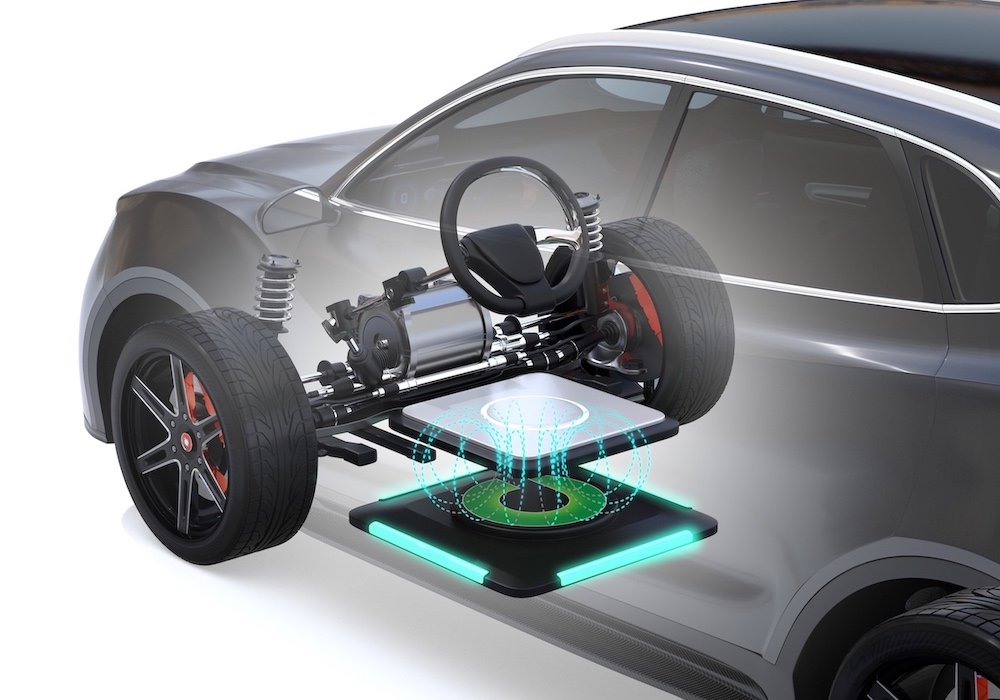
This image is property of www.liacars.com.
Resonant Inductive Coupling
Understanding Resonant Inductive Coupling
Resonant inductive coupling, also known as resonant wireless power transfer (RWPT), is a wireless charging technology that enables efficient power transfer over greater distances. It builds upon the principles of inductive coupling by utilizing resonance to enhance energy transfer between the transmitter and receiver coils. In resonant inductive coupling, both the transmitter and receiver coils are tuned to the same resonant frequency, allowing for a more efficient transfer of energy. This frequency matching enables the coils to resonate and achieve higher power transfer efficiency, even at greater distances than traditional inductive charging.
Advancements in Resonant Inductive Coupling
Resonant inductive coupling has seen significant advancements in recent years, further enhancing its capabilities and potential applications. Researchers and engineers have been working on optimizing the design of the coils to achieve higher levels of efficiency and power output. The development of advanced electronics and control systems has led to improved power conversion and management, maximizing the overall efficiency of the charging process. Additionally, advancements in materials and manufacturing techniques have resulted in more compact and lightweight charging systems, allowing for easier integration into electric vehicles and charging infrastructure.
Issues and Future Development
Despite the advancements in resonant inductive coupling, several challenges remain to be addressed. One of the key issues is the decrease in charging efficiency as the distance between the transmitter and receiver coils increases. Energy losses occur during the transfer process, limiting the maximum charging distance. Researchers are actively exploring methods to mitigate these losses and improve the overall efficiency at greater distances. Another challenge is the potential interference from other wireless devices operating on similar frequencies, which can disrupt the charging process. Ongoing research focuses on developing robust and interference-resistant systems to ensure reliable charging experiences. Future development in resonant inductive coupling aims to optimize efficiency, increase charging distance, and enhance compatibility across a wide range of electric vehicle models.
Radio Frequency (RF) Technology
Explaining Radio Frequency Technology
Radio Frequency (RF) technology is an emerging wireless charging method that utilizes electromagnetic waves to transfer power between a transmitter and a receiver. In RF-based wireless charging systems, the transmitter generates radio waves, which are then captured by the receiver and converted into electrical energy. This technology operates at higher frequencies than traditional inductive charging, allowing for greater charging distance and improved efficiency. RF technology offers the potential for wireless charging without the need for precise alignment between the transmitter and receiver, enabling a more flexible and convenient charging experience.
Pros and Cons of RF Technology for Wireless Charging
RF technology brings several advantages to the field of wireless charging. One of the key benefits is the ability to charge devices at greater distances compared to traditional inductive charging methods. This extended charging range allows for more flexibility in the positioning of charging pads and reduces the need for precise alignment. RF-based charging systems also have the potential to charge multiple devices simultaneously, further enhancing their practicality and convenience. However, RF technology does have some limitations. The increased charging distance and flexibility come at the expense of decreased charging efficiency compared to traditional inductive charging. Furthermore, the potential interference from other electronic devices operating on similar frequencies remains a concern. Ongoing research aims to address these limitations and optimize the efficiency and reliability of RF-based wireless charging systems.
Research and Innovations in RF Technology
The field of RF technology for wireless charging is rapidly evolving, with ongoing research and development efforts aimed at improving efficiency, safety, and compatibility. Researchers are exploring innovative antenna designs that can enhance the energy transfer efficiency of RF-based charging systems. Advanced power management algorithms and control systems are being developed to regulate the power transfer and optimize charging efficiency. Additionally, researchers are working on addressing safety concerns associated with RF technology, including potential electromagnetic radiation exposure and interference with other electronic devices. Innovations in RF technology continue to pave the way for more efficient and widespread adoption of wireless charging for electric vehicles.
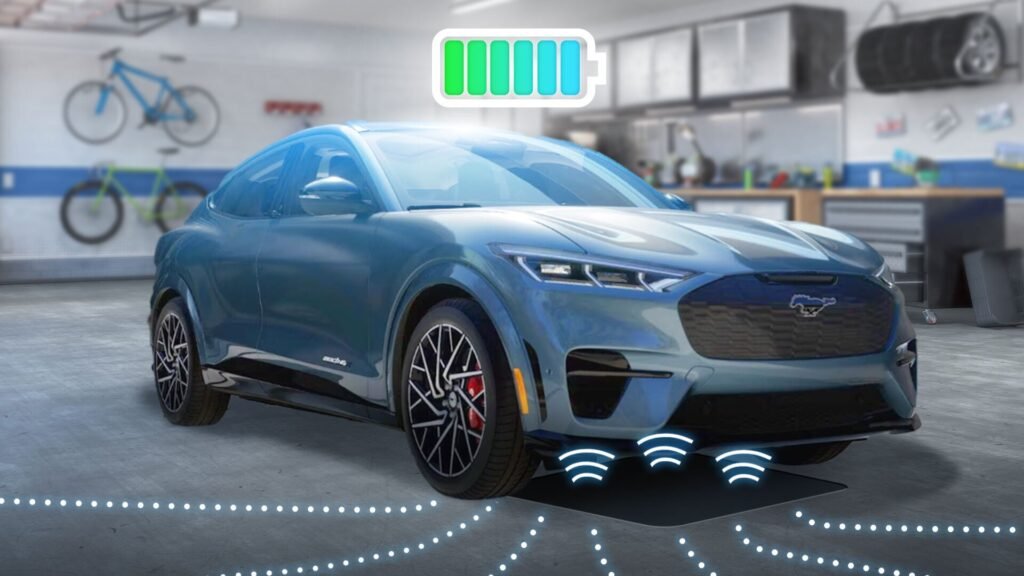
This image is property of i.pcmag.com.
Dynamic Wireless Charging
Overview of Dynamic Wireless Charging
Dynamic wireless charging is an emerging technology that aims to transform the way electric vehicles are charged. Unlike traditional static wireless charging, dynamic wireless charging enables continuous charging while the vehicle is in motion. This technology involves charging infrastructure embedded in the road or surface, which generates an electromagnetic field. As the electric vehicle drives over the charging infrastructure, the receiver on the vehicle captures the generated energy, allowing for simultaneous charging and driving.
Benefits and Challenges for Dynamic Charging
Dynamic wireless charging offers several significant advantages over traditional static charging methods. Firstly, it eliminates the need for frequent stops to recharge, providing uninterrupted charging while the vehicle is on the move. This feature is particularly beneficial for electric vehicles with limited battery range, as it extends their driving range without compromising on convenience. Additionally, dynamic charging can reduce the size and weight of the onboard battery, making electric vehicles more cost-effective and environmentally friendly. However, the implementation of dynamic wireless charging faces several challenges. The development of a standardized infrastructure and compatibility across different electric vehicle models is crucial for widespread adoption. The cost of implementing dynamic charging infrastructure is also a key factor that needs to be addressed. Research and pilot projects are currently underway to overcome these challenges and demonstrate the feasibility and viability of dynamic wireless charging for electric vehicles.
Research and Pilot Projects on Dynamic Wireless Charging
Dynamic wireless charging is an area of active research and development, with numerous pilot projects and collaborations underway across the globe. These projects aim to demonstrate the technical feasibility, reliability, and safety of dynamic charging systems. Some projects focus on testing dynamic charging technology on public roads, while others concentrate on specific applications, such as buses or logistics vehicles. These pilot projects serve as valuable testing grounds to gather real-world data, validate the technology, and identify any potential issues or improvements. The findings from these projects contribute to the ongoing development and refinement of dynamic wireless charging technology, paving the way for its future implementation on a larger scale.
Solar Power Integration
Utilizing Solar Power for Wireless Charging
The integration of solar power with wireless charging offers a sustainable and environmentally friendly approach to power electric vehicles. Solar power harnesses energy from the sun through photovoltaic panels, which convert sunlight into electricity. When combined with wireless charging technology, solar panels can generate power directly to wirelessly charge electric vehicles. This combination provides not only a convenient charging method but also reduces the reliance on the electrical grid and lowers carbon emissions.
Advancements in Solar Power Integration
Advancements in solar power integration have improved the efficiency and practicality of using solar energy for wireless charging. The development of more efficient solar panels, such as monocrystalline and thin-film panels, has increased the power output and reduced the size and weight of solar charging systems. Additionally, advancements in solar tracking technologies enable the panels to follow the sun’s movement throughout the day, maximizing energy generation. The integration of energy storage systems, such as batteries, further enhances the usability of solar-powered wireless charging, enabling charging even during periods of low sunlight. These advancements bring us closer to a future where solar power integration becomes a reliable and effective solution for charging electric vehicles wirelessly.
Feasibility and Limitations of Solar Charging
While solar power integration shows great promise for wireless charging, certain limitations need to be considered. The dependence on sunlight means that solar charging may be less efficient or even impractical in regions with limited sunlight or during cloudy days. The seasonality of sunlight availability also affects the charging output, requiring alternative charging methods during periods of reduced sunlight. Additionally, the initial cost of implementing solar charging infrastructure, including solar panels and storage systems, remains relatively high. However, advancements in technology and economies of scale are gradually reducing these costs, making solar charging more feasible and accessible. Furthermore, ongoing research seeks to enhance the efficiency and reliability of solar charging systems, making them a more viable and sustainable option for powering electric vehicles.
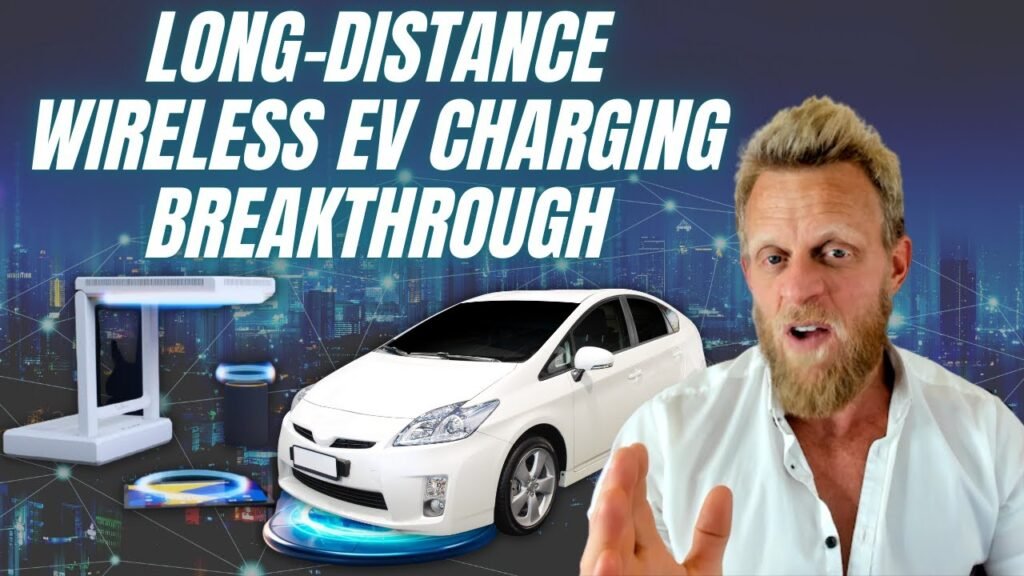
This image is property of i.ytimg.com.
Infrastructure Development
Status of Wireless Charging Infrastructure Development
The development of a robust and widespread wireless charging infrastructure is crucial for the widespread adoption of electric vehicles. Currently, wireless charging infrastructure is at an early stage of development, with limited implementation in selected locations. Pilot projects and collaborations between automakers, charging network operators, and governments are focusing on testing and evaluating various wireless charging technologies and their integration with the existing power grid. These efforts aim to identify challenges, gather data, and develop standardized systems that can support the future growth of wireless charging for electric cars.
Collaborative Efforts to Establish Infrastructure
Establishing a comprehensive wireless charging infrastructure requires collaborative efforts from multiple stakeholders. Automakers, charging network operators, governments, and utility companies are working together to develop and deploy wireless charging systems. Collaborations involve sharing knowledge, resources, and expertise to overcome technical, regulatory, and financial challenges. Additionally, these collaborations facilitate the establishment of common industry standards, ensuring interoperability and compatibility across different wireless charging systems. The collective efforts of these stakeholders are instrumental in driving the development and expansion of wireless charging infrastructure.
Milestones and Future Expansion
Despite being in the early stages, the wireless charging infrastructure has achieved significant milestones. Several cities and municipalities have implemented wireless charging projects, showcasing the technical feasibility and benefits of this technology. These early adopters serve as models for future expansion, providing valuable insights and data to guide further infrastructure development. As wireless charging technology matures and becomes more cost-effective, the infrastructure is expected to expand rapidly. Investments in research and development, as well as public-private partnerships, are driving the growth of wireless charging infrastructure worldwide. The future holds the promise of a comprehensive and easily accessible network of wireless charging stations that support the increasing number of electric vehicles on the road.
Safety and Efficiency Concerns
Addressing Safety Issues in Wireless Charging
Safety is of paramount importance in wireless charging systems to ensure the protection of users and their vehicles. One significant safety concern is the potential risk of electric shock during the charging process. Manufacturers and researchers are implementing various safeguards, such as insulated charging pads and sensors that detect foreign objects or human contact, to minimize the risk of electric shock. Additionally, the introduction of comprehensive safety standards and regulations ensures that wireless charging systems meet stringent safety requirements. Ongoing research and development efforts focus on strengthening safety measures and continuously improving the safety of wireless charging technology.
Improving Efficiency of Wireless Charging Systems
Efficiency is a critical aspect of wireless charging systems to ensure optimal power transfer and minimize energy losses. Research and development efforts focus on improving the efficiency of wireless charging technology by addressing factors that contribute to energy loss, such as heat generation and electromagnetic interference. Advancements in coil design, power electronics, and control algorithms aim to maximize energy transfer efficiency and minimize waste. Additionally, the optimization of charging protocols and communication between the charging pad and the vehicle’s receiver can further improve overall system efficiency. The continuous improvement of wireless charging efficiency is essential to ensure sustainable and effective charging for electric vehicles.
Regulations and Standards
The development and adoption of regulations and standards play a crucial role in the safety, performance, and interoperability of wireless charging systems. Governments and industry organizations work collaboratively to establish comprehensive safety standards for wireless charging technology. These standards cover aspects such as electrical safety, electromagnetic compatibility, and communication protocols. Compliance with these standards ensures that wireless charging systems meet the necessary requirements for safe and reliable operation. Furthermore, the alignment of international standards facilitates interoperability and compatibility between different wireless charging systems. Continued efforts in establishing and refining regulations and standards are essential to foster the growth and acceptance of wireless charging technology worldwide.
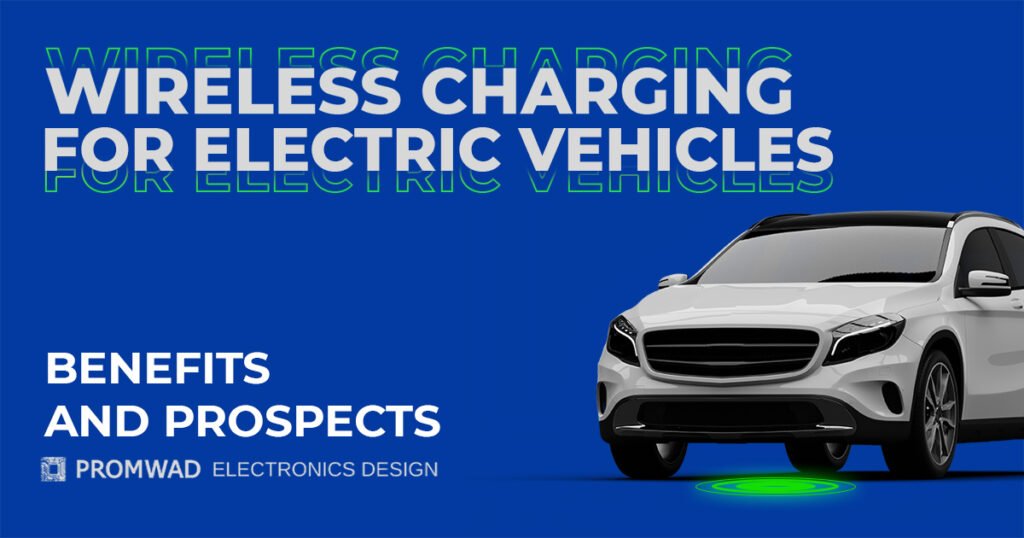
This image is property of promwad.com.
Future Outlook
Growing Adoption of Wireless Charging for Electric Cars
The future of wireless charging for electric cars is promising, with growing adoption and acceptance among automakers, infrastructure developers, and consumers. The convenience and seamless charging experience offered by wireless charging systems are becoming increasingly attractive to electric vehicle owners. As the technology continues to mature and gains widespread acceptance, more automakers are beginning to integrate wireless charging capabilities into their electric vehicle models. Furthermore, infrastructure developers are investing in wireless charging infrastructure, with plans to expand the network of charging stations. The growing adoption of wireless charging is expected to have a transformative impact on the electric vehicle market, further driving its growth and accessibility.
Predictions and Forecast for Wireless Charging Industry
Experts and industry analysts predict significant growth and expansion in the wireless charging industry in the coming years. The global wireless charging market is projected to experience substantial growth, driven by advancements in technology, increasing demand for electric vehicles, and supportive government initiatives. Market forecasts indicate a steady increase in the number of wireless charging stations, both in residential and public settings, to meet the growing demand for electric vehicle charging. Furthermore, the development of standardized systems and increased interoperability is expected to drive down costs and accelerate the adoption of wireless charging technology. The wireless charging industry holds great potential, providing opportunities for innovation, investment, and market growth.
Potential Impact on EV Market
The widespread adoption of wireless charging technology is expected to have a profound impact on the electric vehicle market. The convenience and ease of use offered by wireless charging systems are likely to attract more consumers to electric vehicles, eliminating the perceived challenges associated with traditional plug-in charging. Wireless charging also addresses the issue of range anxiety, as continuous and automatic charging while driving extends the electric vehicle’s range without the need for frequent stops. Furthermore, the integration of wireless charging capabilities by automakers can enhance the appeal of electric vehicles and contribute to increased market share. The potential impact of wireless charging on the electric vehicle market is significant, driving further growth, and accelerating the transition to sustainable transportation.
Conclusion
Recap of Wireless Charging Breakthroughs
Wireless charging technology has made significant breakthroughs in recent years, revolutionizing the way electric vehicles are powered. Magnetic resonance technology and inductive charging have emerged as reliable and efficient methods of wirelessly transferring power. Resonant inductive coupling and RF technology have pushed the boundaries of wireless charging efficiency and flexibility. Dynamic wireless charging and solar power integration offer innovative approaches to extend the range and sustainability of electric vehicles. Additionally, infrastructure development, safety enhancements, and efficiency improvements have paved the way for wireless charging’s widespread adoption.
Promising Technologies and Areas for Further Development
Several promising technologies and areas for further development in wireless charging have emerged. Magnetic resonance technology continues to evolve, addressing challenges related to efficiency and interference. Inductive charging remains an attractive option, with advancements focused on improving alignment and increasing efficiency. Resonant inductive coupling and RF technology are undergoing continuous research and development, aiming to enhance charging efficiency, distance, and compatibility. Dynamic wireless charging and solar power integration hold great potential for transforming the way electric vehicles are charged and powered. These areas present exciting opportunities for innovation and investment, driving the future growth of wireless charging technology.
Implications for Electric Vehicle Industry
Wireless charging technology brings significant implications for the electric vehicle industry. The convenience, flexibility, and user-friendly nature of wireless charging systems are expected to attract more consumers to electric vehicles, accelerating market adoption. The development and expansion of wireless charging infrastructure provide opportunities for infrastructure developers, automakers, and charging network operators. Additionally, wireless charging technology can alleviate range anxiety, enhance the sustainability of electric vehicles, and contribute to the transition to cleaner transportation. The impact of wireless charging on the electric vehicle industry is transformative, fostering innovation, driving market growth, and establishing a sustainable future.
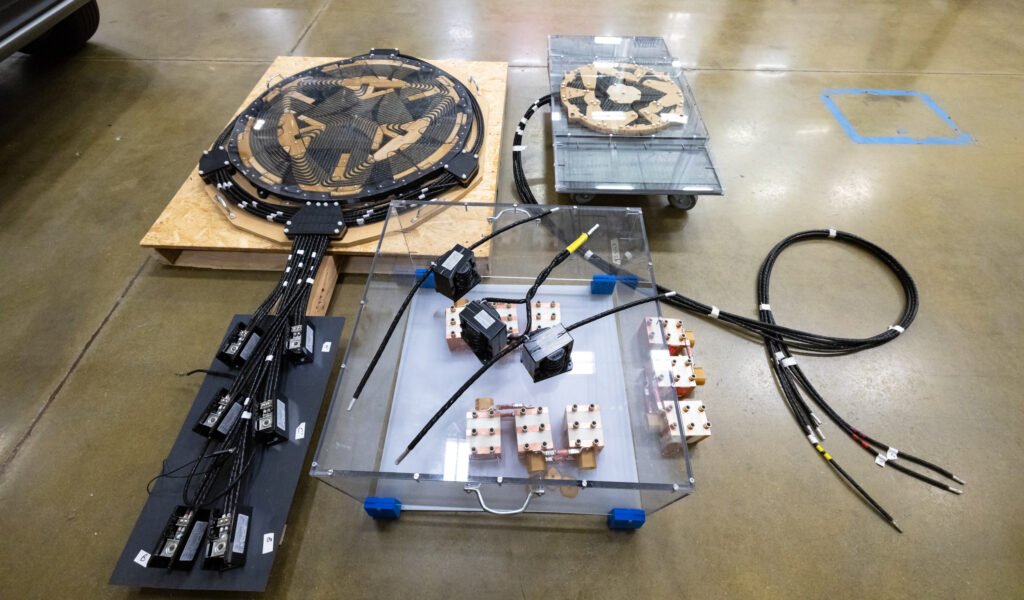
This image is property of www.ornl.gov.

